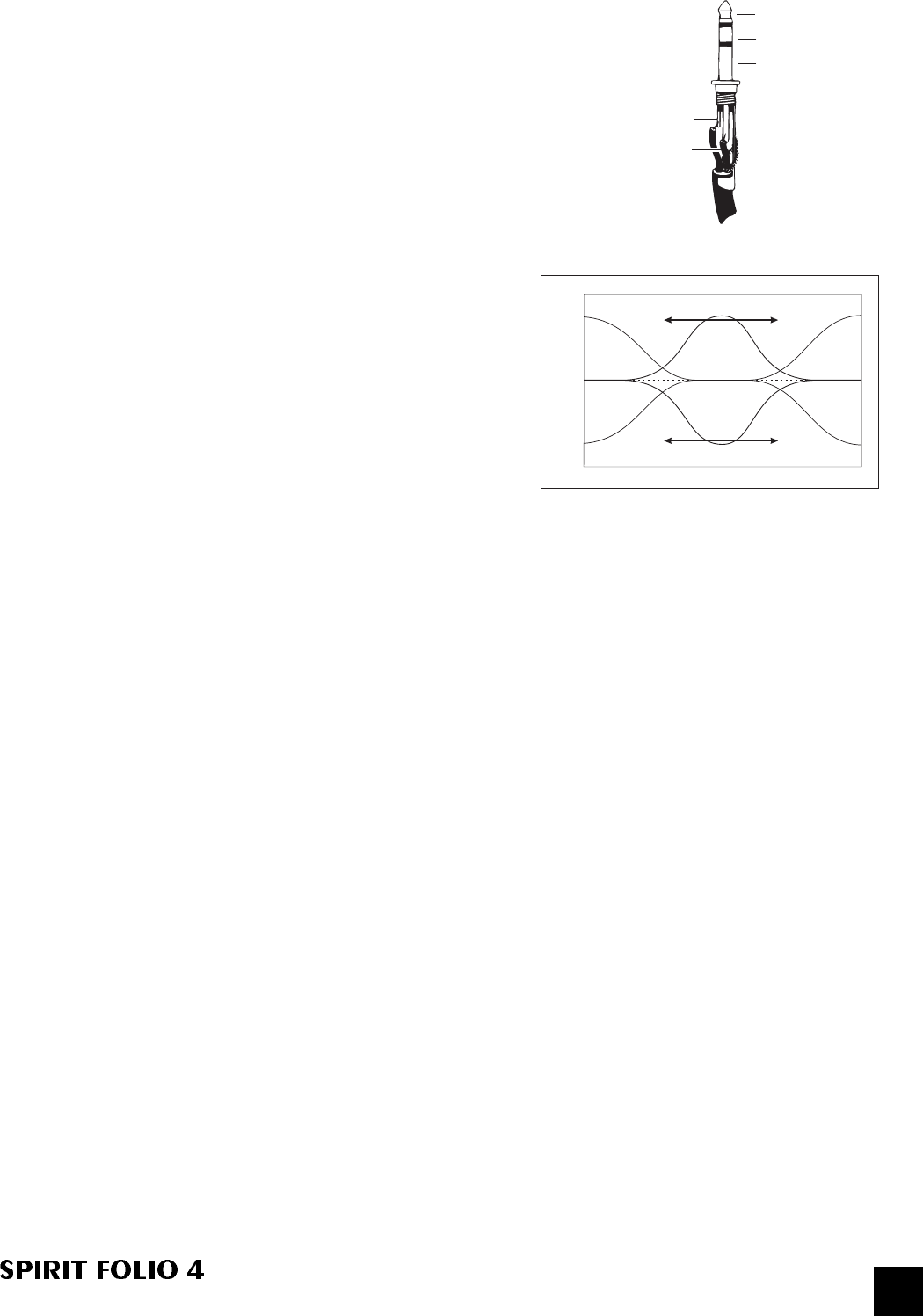
INSERT
The pre-EQ Insert is a break point in the channel signal path. It allows the signal
to be taken out of the mixer, through an external piece of equipment and then
back into the mixer to continue through to the final output. The Insert is a 3-pole
‘A’ gauge jack socket, which is normally bypassed. When a jack is inserted, the
signal path is broken at a point just after the Hi-Pass Filter, but before the EQ
section. The signal from the channel appears on the TIP of the plug and is
returned on the RING. The insert point allows limiters, compressors and other
signal processing units to be added as required to particular channels and,
because it is located pre-EQ, noise generated by the external equipment may be
reduced by a small amount of H.F. cut in the Equaliser.
EQUALISER
The Equaliser (EQ) allows precise manipulation of the sound,
particularly to improve the sound in live PA applications where the
original signal is often far from ideal due to poor acoustics or
restrictions on where to place microphones and where slight
boosting or cutting of particular voice frequencies can really make a
difference to clarity. The EQ allows enough control to improve, for
instance, bad recordings or the precision to gently enhance vocal
or live instrument tracks. There are three sections, HF, MID and LF
giving the sort of control usually only found on much larger mixers.
The EQ knobs can have a dramatic effect, so use them sparingly
and listen carefully as you change any settings so that you get to know how they affect the sound.
HF EQ
Turn to the right to boost high (treble) frequencies by up to 15dB at 12kHz, adding crispness to cymbals, vocals
and electronic instruments. Turn to the left to cut these frequencies by up to 15dB, reducing hiss or other unwanted
high-frequency components in the signal, which can be emphasised by certain types of microphone. Set the knob
in the centre-detented position when a flat response is required.
MID EQ
There are two knobs which work together to form a SWEPT MID EQ. The lower knob provides 15dB of boost and
cut, just like the HF EQ knob, but the frequency at which this occurs can be set by the upper knob over a range of
250Hz to 6kHz. This allows some truly creative improvement of the signal in live situations, because this mid band
covers the range of most vocals. Listen carefully as you use these controls together to find how particular
characteristics of a vocal signal can be enhanced or reduced. Set the lower knob to the centre-detented position
when not required.
LF EQ
Turn to the right to boost low (bass) frequencies by up to 15dB at 60Hz, adding warmth to vocals or extra punch
to synths, guitars and drums. Turn to the left to cut low frequencies by up to 15dB for reducing hum, stage rumble
or to improve a mushy sound. Set the knob to the centre-detented position when not required.
EQ SWITCH
The EQ switch bypasses the Equalisation section when released and places it into the channel path when pressed.
It would typically be used for simple comparison of the equalised and unequalised signal.
AUXILIARY SENDS
20.0
15.0
10.0
5.0
0.0
-5.0
-10.0
-15.0
-20.0
20 1k 10k 20k
100
dB
Frequency/Hz
TYPICAL EQUALISER RESPONSE
LF SWEPT MID HF
BOOST
CUT
Signal Send
Signal Return
Gnd/Screen
Tip
Ring
Sleeve
14


















